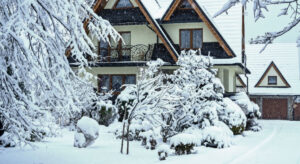
Unfreezable Giants: How Trees Survive Winter’s Chill
Winter brings cold temperatures, snow, and frost, but despite the frigid conditions, trees stand tall and seemingly unfazed by the freezing weather. Have you ever wondered how trees manage to avoid freezing during the winter months? In this blog, we will explore the remarkable adaptations and survival strategies that enable trees to withstand the harshest of winters.
1. Frost Resistance
While it may seem like trees are impervious to freezing, they do experience a certain level of frost. However, they are not damaged by it due to their incredible adaptability. Trees have evolved to resist the formation of ice within their cells. The water inside tree cells is protected by natural antifreeze substances, which prevent ice crystals from forming within the cell walls.
2. Dehydration
As winter approaches, trees gradually reduce the amount of water in their cells, a process known as hardening off. This dehydration helps lower the freezing point of their cell contents, making them more resilient to frost. The water remaining in the tree cells is highly concentrated, which prevents ice from forming and causing damage.
3. Dormancy
During winter, trees enter a state of dormancy, which is similar to hibernation in animals. In this phase, their metabolic processes slow down significantly. Photosynthesis comes to a halt, and energy consumption decreases. This dormancy helps conserve resources and reduces the risk of freezing.
4. Protective Outer Layers
The bark of a tree plays a crucial role in protecting it from extreme temperatures. The outer bark acts as an insulating layer, shielding the inner tissues from cold temperatures and preventing frost from penetrating into the vital parts of the tree.
5. Natural Anti-freeze
Trees have developed their own form of natural antifreeze in the form of chemicals and compounds. For instance, some trees produce sugars and proteins that act as cryoprotectants. These substances lower the freezing point of the tree’s cell contents, preventing them from freezing even when temperatures drop significantly.
6. Microclimate Creation
Trees can create their own microclimates. When the snow accumulates around their base, it provides insulation and prevents the ground from becoming too cold. This microclimate benefits the tree by keeping the area immediately surrounding it at a more moderate temperature.
Trees are true marvels of nature, and understanding their strategies for winter survival can deepen our appreciation for these giants that grace our landscapes year-round. So, the next time you marvel at the strength of a tree standing tall in the midst of a winter wonderland, you’ll have a better understanding of the incredible adaptations that make this possible.
Get a Quote
Looking for expert tree care? Fill out the form below and we’ll be in touch!
Looking for expert tree care?

